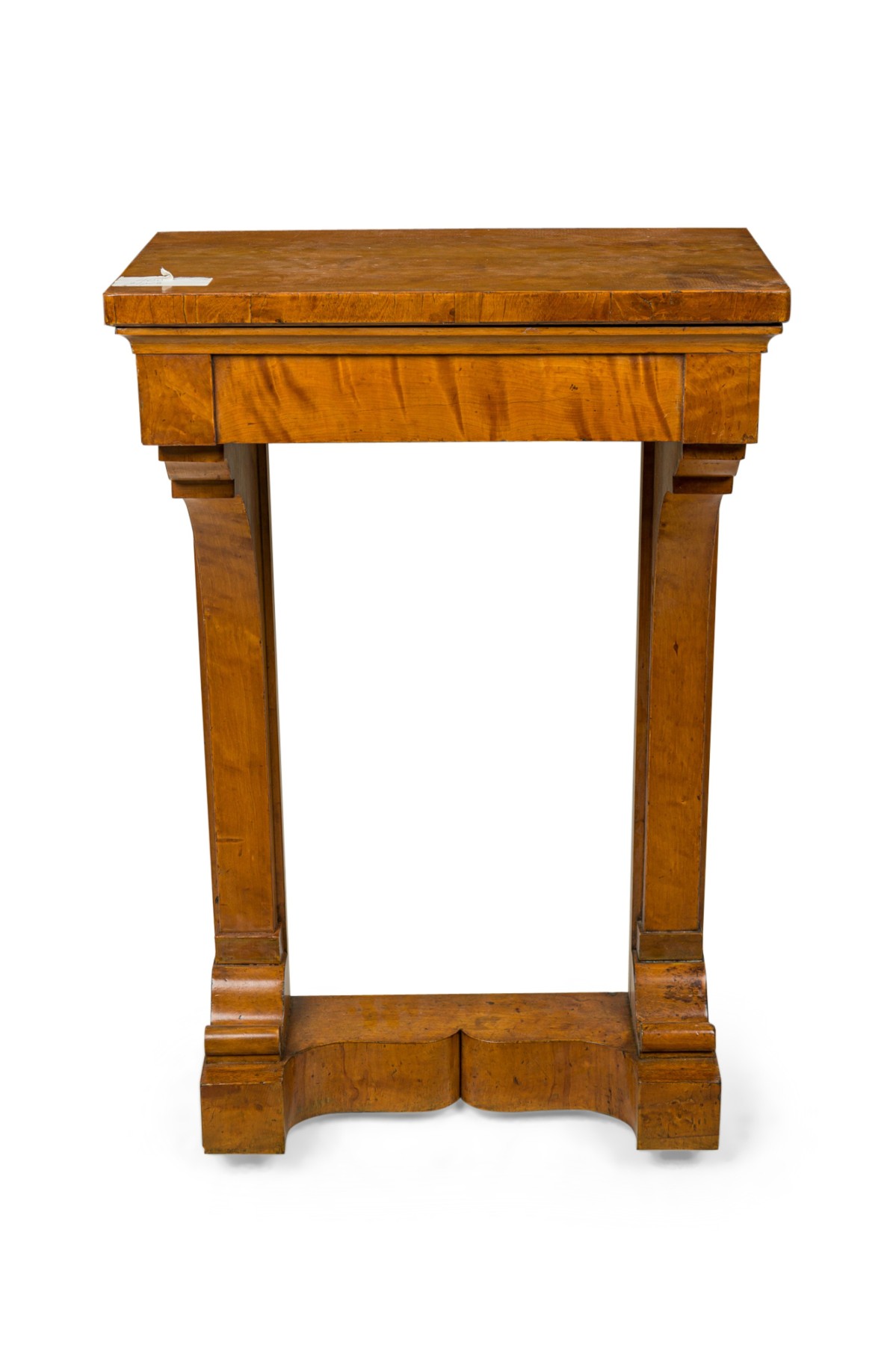X
{{ modalTitle }}
PLEASE FILL IN THE REQUIRED FIELDS.X
X
{{ modalTitle }}
Choose one of the options below.X
ITEM SUCCESSFULLY
ADDED TO PROJECT
Biedermeier Style Console
 Biedermeier
Biedermeier German & Austrian, Continental
German & Austrian, Continental Tables, Dining Room
Tables, Dining Room Console/Wall Tables, Sideboards and Buffets
Console/Wall Tables, Sideboards and Buffets
Newel Warehouse
32-00 Skillman Ave
Long Island City NY - 11101
 (212) 758-1970
(212) 758-1970
Biedermeier Style Console

Newel Warehouse
32-00 Skillman Ave
Long Island City NY - 11101
 (212) 758-1970
(212) 758-1970
 Tables, Dining Room
Tables, Dining Room Console/Wall Tables, Sideboards and Buffets
Console/Wall Tables, Sideboards and BuffetsBiedermeier
A style of furniture produced in Austria and Germany during the first half of the 19th century. Inspired by French Empire and German painted peasant work. The name was borrowed from an imaginary cartoon character called Papa Biedermeier, an uneducated country gentlemen who considered himself a connoisseur of fine and industrial arts. Simple marquetry patterns were used with pressed brass ornaments of Greek inspiration as well as painted motifs of wreaths, urns, and floral, animal and human forms. Woods used were mainly fruitwoods, maple, mahogany and birch.
Console table
Starting in the 17th Century, console tables were side table usually fixed to a wall with front legs for support. Frequently the backside of consoles are left undecorated as they are viewed only from the front or sides and were created with the intent of display, often serving as pier table underneath a large mirror. Contemporary references to console tables can also indicate a freestanding relatively tall, rectangular table that is placed against a entrance wall or sofa.
Maple
A hardwood used for furniture-making and flooring, characterized by a close, light brown grain. Its grain pattern can vary based on variety. Though often straight, it can sometimes include small knots (in the case of birdseye maple) or flame shapes. Some varieties of maple are used to craft fine wooden instruments such as violins and cellos.
Biedermeier
A style of furniture produced in Austria and Germany during the first half of the 19th century. Inspired by French Empire and German painted peasant work. The name was borrowed from an imaginary cartoon character called Papa Biedermeier, an uneducated country gentlemen who considered himself a connoisseur of fine and industrial arts. Simple marquetry patterns were used with pressed brass ornaments of Greek inspiration as well as painted motifs of wreaths, urns, and floral, animal and human forms. Woods used were mainly fruitwoods, maple, mahogany and birch.
Console table
Starting in the 17th Century, console tables were side table usually fixed to a wall with front legs for support. Frequently the backside of consoles are left undecorated as they are viewed only from the front or sides and were created with the intent of display, often serving as pier table underneath a large mirror. Contemporary references to console tables can also indicate a freestanding relatively tall, rectangular table that is placed against a entrance wall or sofa.
Maple
A hardwood used for furniture-making and flooring, characterized by a close, light brown grain. Its grain pattern can vary based on variety. Though often straight, it can sometimes include small knots (in the case of birdseye maple) or flame shapes. Some varieties of maple are used to craft fine wooden instruments such as violins and cellos.
Biedermeier
A style of furniture produced in Austria and Germany during the first half of the 19th century. Inspired by French Empire and German painted peasant work. The name was borrowed from an imaginary cartoon character called Papa Biedermeier, an uneducated country gentlemen who considered himself a connoisseur of fine and industrial arts. Simple marquetry patterns were used with pressed brass ornaments of Greek inspiration as well as painted motifs of wreaths, urns, and floral, animal and human forms. Woods used were mainly fruitwoods, maple, mahogany and birch.
Console table
Starting in the 17th Century, console tables were side table usually fixed to a wall with front legs for support. Frequently the backside of consoles are left undecorated as they are viewed only from the front or sides and were created with the intent of display, often serving as pier table underneath a large mirror. Contemporary references to console tables can also indicate a freestanding relatively tall, rectangular table that is placed against a entrance wall or sofa.
Maple
A hardwood used for furniture-making and flooring, characterized by a close, light brown grain. Its grain pattern can vary based on variety. Though often straight, it can sometimes include small knots (in the case of birdseye maple) or flame shapes. Some varieties of maple are used to craft fine wooden instruments such as violins and cellos.
















